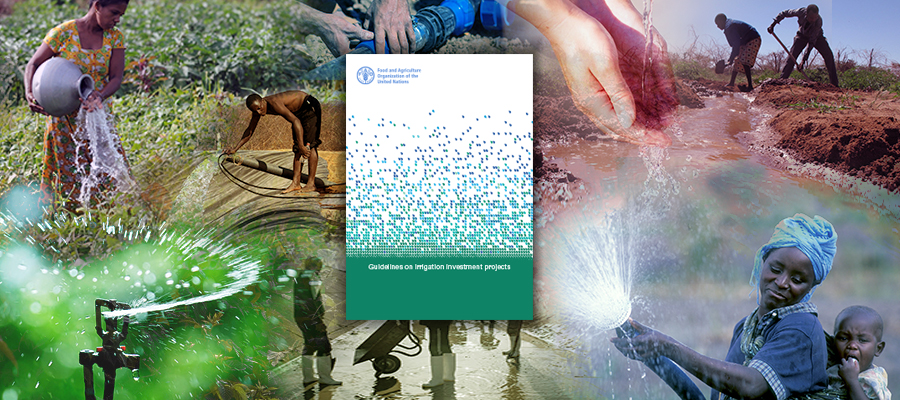New irrigation investment guidelines feature innovative approaches and tools
 cover of publication
cover of publicationResponsible and substantial investments in irrigation are vital for delivering on the 2030 Agenda for Sustainable Development – from reducing poverty and achieving zero hunger to strengthening rural livelihoods and managing natural resources sustainably.
Further irrigation development faces multiple challenges in today’s world, including water scarcity, water competition, water degradation and the impact of climate change.
Guidelines on irrigation investment projects is a new publication from FAO’s Investment Centre that introduces innovative approaches, tools and resources to address these challenges. It offers the reader step-by-step guidance on how to apply them at each phase of the investment project cycle.
The publication is designed for national and international professionals involved in irrigation investment projects, including staff from international financing institutions, development assistance agencies, governments and consulting firms,
A multidisciplinary, inter-agency team developed the guidelines, with contributions from the International Fund for Agricultural Development, European Investment Bank, International Commission on Irrigation and Drainage and World Bank.
The work complements FAO’s Guidelines for planning irrigation and drainage investment projects, published over 20 years ago.
Toward greater productivity, equity and sustainability
Zhijun Chen, an FAO senior investment support officer and leader of the authors’ group, said that given the changing climate, business as usual is not an option.
“Innovations in irrigation investments are urgently needed to provide more reliable, flexible and diversified water services while promoting productive, equitable and sustainable water resource development and management,” he said.
These guidelines have been updated to cover all phases of the project cycle – from project identification, preparation, appraisal and negotiation to implementation and evaluation.
They draw on lessons and experiences from irrigation investment operations over the last two decades. They also guide irrigation investment practitioners on how to incorporate the latest innovations.
Innovations like water governance and land tenure to address conflicts of interest, equitable access to land and water resources and sustainability.
Or water accounting and auditing to better inform investment decision-making for smart water management and water security improvement, especially in areas under increasing water scarcity.
Others include irrigation modernization, consumption-based water management, integrated investment planning, advanced economic evaluation, principles for responsible agriculture investment and advanced information and communication technologies.
Adoption of climate-smart approaches can help strengthen the resilience of agricultural systems to drought and flood risks and better manage agriculture’s carbon footprint.
“In the next five to ten years, climate change screening and risk assessment will be widely adopted in irrigation investment designs, and the estimation and assessment of carbon emissions from proposed irrigation investments will be mainstreamed into investment processing procedures,” Chen said.
Better irrigation investments
The guidelines, officially launched on 2 April at this year’s FAO’s Land and Water Days in Cairo, Egypt, add to a growing body of knowledge on irrigation investment support.
They will help develop the capacity of countries to make better investment decisions – an important part of the Investment Centre’s work, along with investment project design.
“Our goal is to make irrigation investments more effective, efficient and sustainable. With these guidelines, we’ve considered the different requirements of international financing institutions and development partners and also generalized the procedures and formats of project processing so they are applicable to all types of irrigation investment projects,” Chen added.
